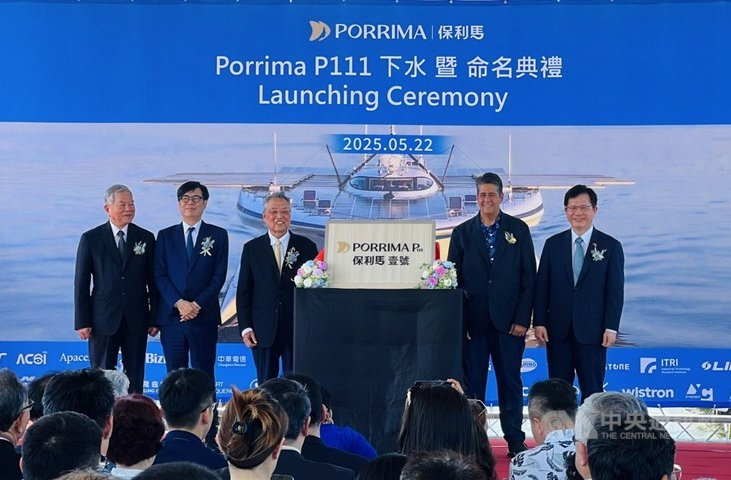In a groundbreaking development for Taiwan’s green maritime sector and international environmental diplomacy, the zero-emission vessel Porrima P111 was officially launched on Thursday in Singda Harbor, Kaohsiung. The vessel, a 32-meter-long carbon fiber catamaran powered entirely by hydrogen, solar, and wind energy, marks a significant milestone in sustainable marine technology.
Developed by Porrima Inc., the vessel stands as a symbol of Taiwan’s growing leadership in the global clean-tech race. It was built entirely using Taiwanese supply chains, highlighting the country’s capacity to lead in advanced, eco-friendly marine solutions.
A Green Innovation Milestone: Technology Meets Diplomacy
This vessel isn’t just about green transportation—it’s Taiwan’s latest diplomatic and environmental statement. Porrima P111 will be deployed in Palau, one of Taiwan’s few remaining diplomatic allies, to support eco-tourism and high-end diving services. This represents a strategic blend of soft diplomacy and environmental leadership.
At the launch event were key figures including:
- Kaohsiung Mayor Chen Chi-mai,
- Taiwanese Foreign Minister Lin Chia-lung,
- Palauan President Surangel Whipps Jr., and
- Porrima Inc. founder Stan Shih, who is also the founder of Acer.
Mayor Chen emphasized that this project “symbolizes Taiwan and Palau working together toward net-zero aspirations,” and highlighted how Taiwan’s yacht manufacturing and information technology industries are becoming global frontrunners.
Unique Design and Zero-Emission Tech
Porrima P111’s capabilities go beyond conventional maritime vessels:
- Length: 32 meters
- Speed: Capable of reaching 10 knots
- Power Sources: Solar panels, wind turbines, and hydrogen fuel cells
- Structure: Lightweight carbon fiber catamaran hull
- Emissions: Zero carbon footprint during operation
Unlike many so-called “green” vessels that rely on hybrid power, Porrima is one of the first true zero-emission boats that can operate independently of fossil fuels, even for long durations.
Taiwan’s Eco-Leadership and the Blue Economy
This launch is aligned with Taiwan’s ambition to lead the Blue Economy in Asia—a sustainable use of ocean resources for economic growth, improved livelihoods, and ocean ecosystem health. By investing in vessels like Porrima, Taiwan is creating not only technology but also a diplomatic bridge through green tourism and cooperation with allies.
Palau, a country of around 20,000 people, is vulnerable to climate change and has long promoted eco-friendly tourism. Taiwan’s deployment of Porrima there is a perfect example of “climate diplomacy”—sharing technological resources with friendly nations to support both environmental and economic goals.
Commentary: Why Porrima Matters More Than Just Innovation
This is more than a ship. Porrima P111 is a floating manifesto of what future tourism, trade, and diplomacy can look like. Taiwan is signaling to the world:
- It can build cutting-edge, zero-emission technology.
- It is willing to share this with vulnerable nations.
- It can deepen diplomatic ties through sustainability.
With China pushing to isolate Taiwan diplomatically, initiatives like these demonstrate Taiwan’s independent innovation ecosystem and its ability to make meaningful contributions to the global green transition—even without official recognition from many countries.
FAQs
What is the Porrima P111?
It’s a 32-meter zero-emission catamaran powered by solar, wind, and hydrogen fuel. Built using Taiwanese innovation, it supports sustainable tourism and marine research.
Where will the vessel operate?
In Palau, a Pacific island nation allied with Taiwan. It will be used for diving tours and eco-tourism.
What makes this vessel special?
It’s entirely powered by renewable energy with zero emissions, showcasing next-gen marine innovation.
Why is Taiwan launching this in Palau?
As part of climate diplomacy, Taiwan is sharing its green tech with friendly nations while strengthening diplomatic ties.
What role did Kaohsiung play?
Kaohsiung is home to Taiwan’s yacht and shipbuilding industries. The city aims to lead globally in net-zero vessel technology.


